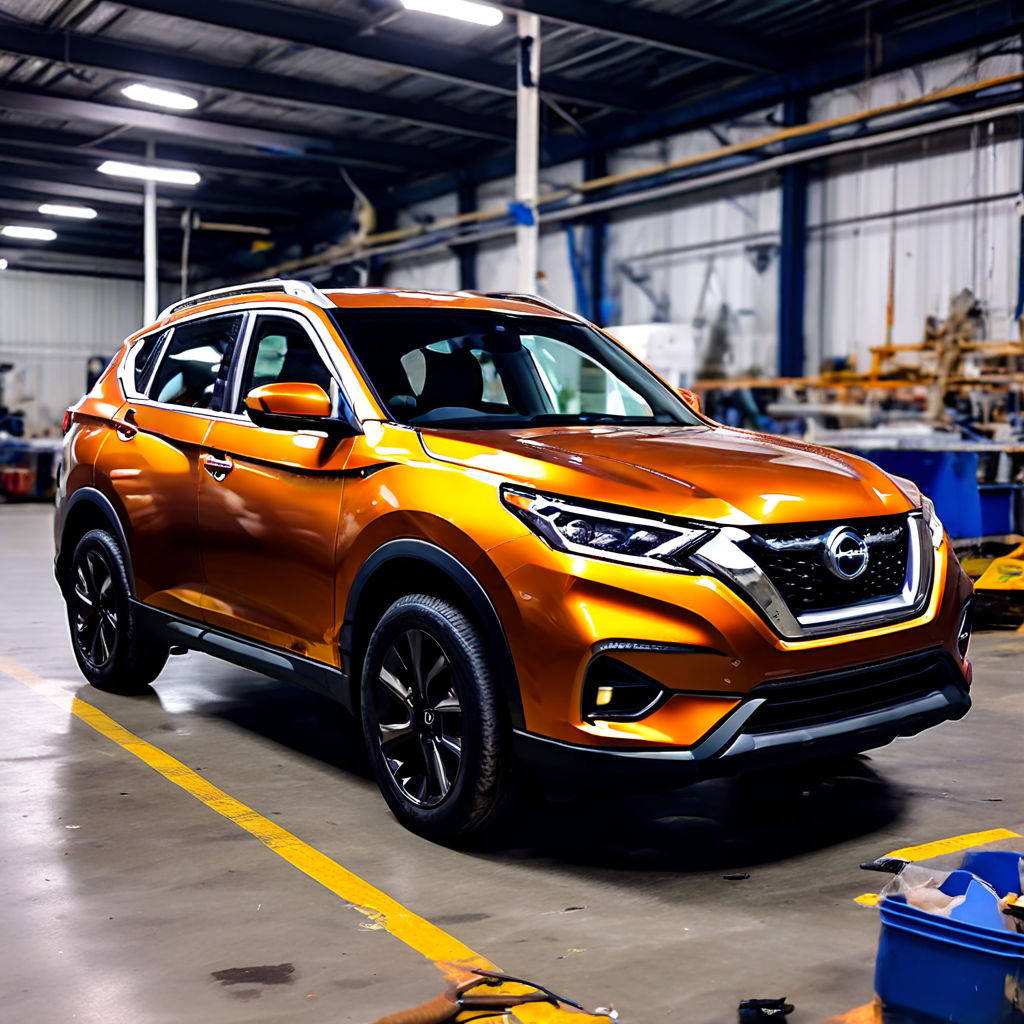
1. Why Repaint Your Nissan Rogue?
There are several reasons why you might consider repainting your Nissan Rogue:
- Aesthetic Appeal: Over time, your car’s paint may fade, chip, or become scratched. A fresh coat of paint can restore its original beauty or give it a new, personalized look.
- Protection: Paint protects the metal body of your car from rust, corrosion, and environmental damage. Repainting helps maintain this protective barrier.
- Increased Resale Value: A well-maintained paint job can increase the resale value of your vehicle, making it more attractive to potential buyers.
2. Types of Car Paint Jobs
Before you begin, it’s important to understand the different types of car paint jobs available:
- Basic Paint Job: Typically involves a single-stage application of a new color. It’s the most affordable option, costing between $500 and $1,000.
- Standard Paint Job: This includes a base coat, a color coat, and a clear coat. It offers better durability and finish, ranging from $1,000 to $3,000.
- Premium Paint Job: Involves multiple layers of paint and clear coats, with higher quality materials and a more intricate application process. This option can cost upwards of $3,500 to $8,000.
3. Preparation for Repainting
3.1. Choose the Right Paint
- Color Match: If you’re sticking with the original color, ensure the new paint matches the factory finish. For custom colors, work with a professional to select the best shade and type of paint.
- Type of Paint: The most common types include enamel, lacquer, and urethane. Urethane is recommended for its durability and resistance to chipping.
3.2. Gather Tools and Materials
- Sandpaper (320 to 600 grit)
- Primer
- Automotive Paint
- Clear Coat
- Masking Tape and Paper
- Spray Gun or Paint Sprayer
- Respirator Mask and Safety Gear
- Buffer and Polishing Compounds
3.3. Surface Preparation
- Wash the Car: Thoroughly clean the car to remove dirt, grease, and debris. Any contaminants can affect the adhesion of the new paint.
- Sand the Surface: Use sandpaper to remove the old paint and smooth out any imperfections. Focus on rust spots, scratches, and dings.
- Apply Primer: Once the surface is smooth, apply a coat of primer. This ensures the new paint adheres properly and provides a uniform base.
4. The Painting Process
4.1. Masking
- Cover Non-Painted Areas: Use masking tape and paper to cover areas that should not be painted, such as windows, lights, and trim.
- Double-Check Coverage: Ensure all edges are securely taped to avoid overspray.
4.2. Applying the Base Coat
- Spray the Paint: Using a spray gun, apply the base coat in even, overlapping strokes. Keep the gun at a consistent distance from the surface (about 6 to 10 inches).
- Multiple Layers: Apply 2 to 3 coats, allowing each layer to dry for about 15 to 30 minutes before applying the next one.
4.3. Clear Coat Application
- Add Protection and Shine: Once the base coat is dry, apply 2 to 3 layers of clear coat. This adds depth, protection, and shine to the paint job.
- Drying Time: Allow the clear coat to dry for at least 24 to 48 hours before handling or driving the vehicle.
5. Finishing Touches
5.1. Wet Sanding and Buffing
- Wet Sand: Use fine-grit sandpaper (1000 to 2000 grit) to smooth out any imperfections in the clear coat. This step is crucial for achieving a professional finish.
- Buff the Surface: Use a buffer with polishing compounds to restore the shine and remove any dullness from the sanding process.
5.2. Final Inspection
- Check for Flaws: Inspect the paint job under various lighting conditions to ensure there are no runs, orange peel, or uneven areas.
- Polish: Apply a final coat of polish to enhance the shine and protect the finish.
6. Maintenance Tips
- Avoid Washing Immediately: Wait at least two weeks before washing the vehicle to allow the paint to cure fully.
- Use Gentle Cleaners: Avoid harsh chemicals and abrasive sponges that could damage the new paint.
- Regular Waxing: Wax your car every few months to maintain the shine and protect the paint from UV rays and contaminants.
7. Common Questions
7.1. How long does a paint job last?
A well-done paint job can last between 10 to 15 years with proper care.
7.2. Can I paint my car myself?
While DIY painting is possible, achieving a professional finish requires skill, the right tools, and a controlled environment. It’s often worth considering professional services for the best results.
7.3. How much does it cost to paint a Nissan Rogue?
The cost can vary based on the type of paint job, ranging from $500 for a basic job to over $8,000 for a premium finish.
7.4. What is the best type of paint for my Nissan Rogue?
Urethane paint is recommended for its durability and resistance to chipping, making it ideal for daily-driven vehicles.
7.5. How can I maintain my new paint job?
Regular washing, waxing, and avoiding exposure to harsh elements like direct sunlight and road salt will help maintain your car's paint job.

